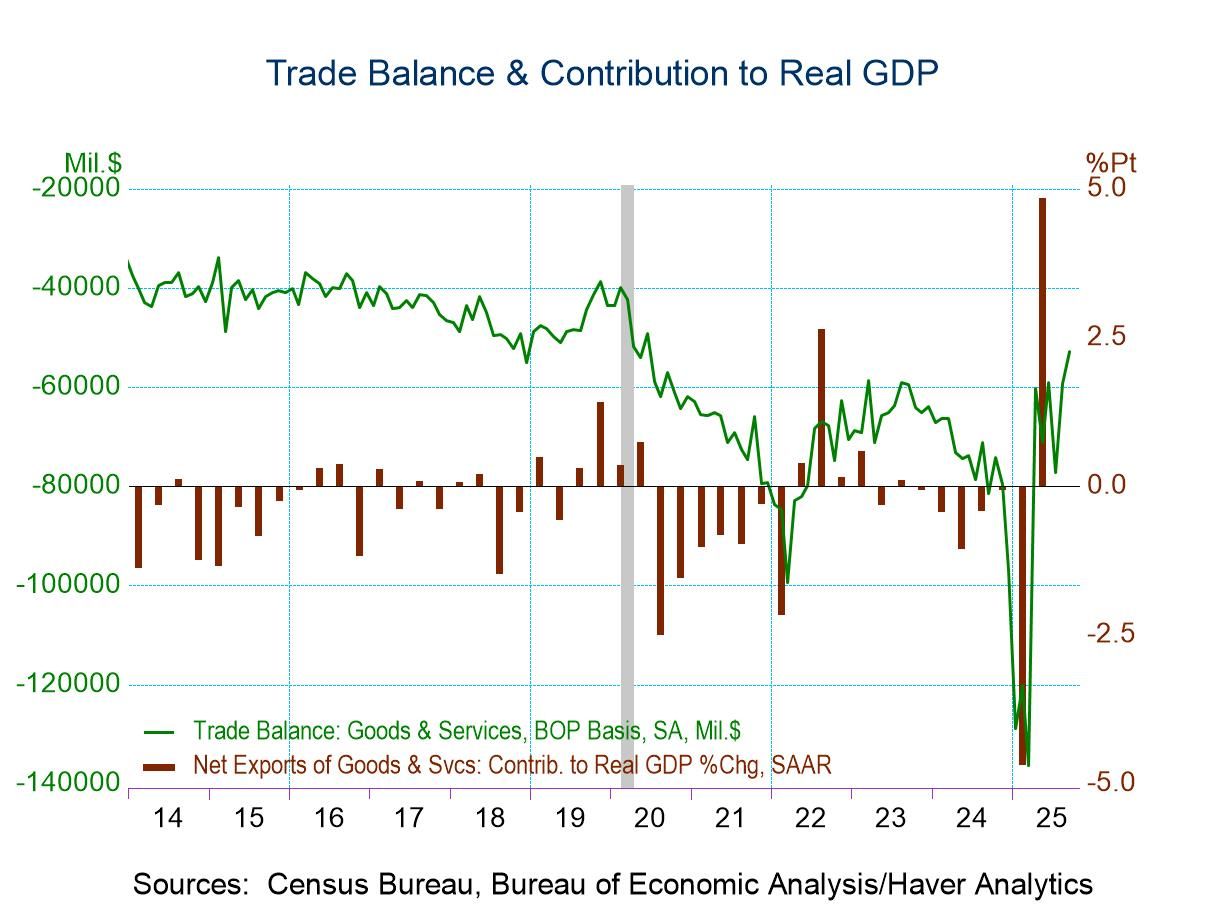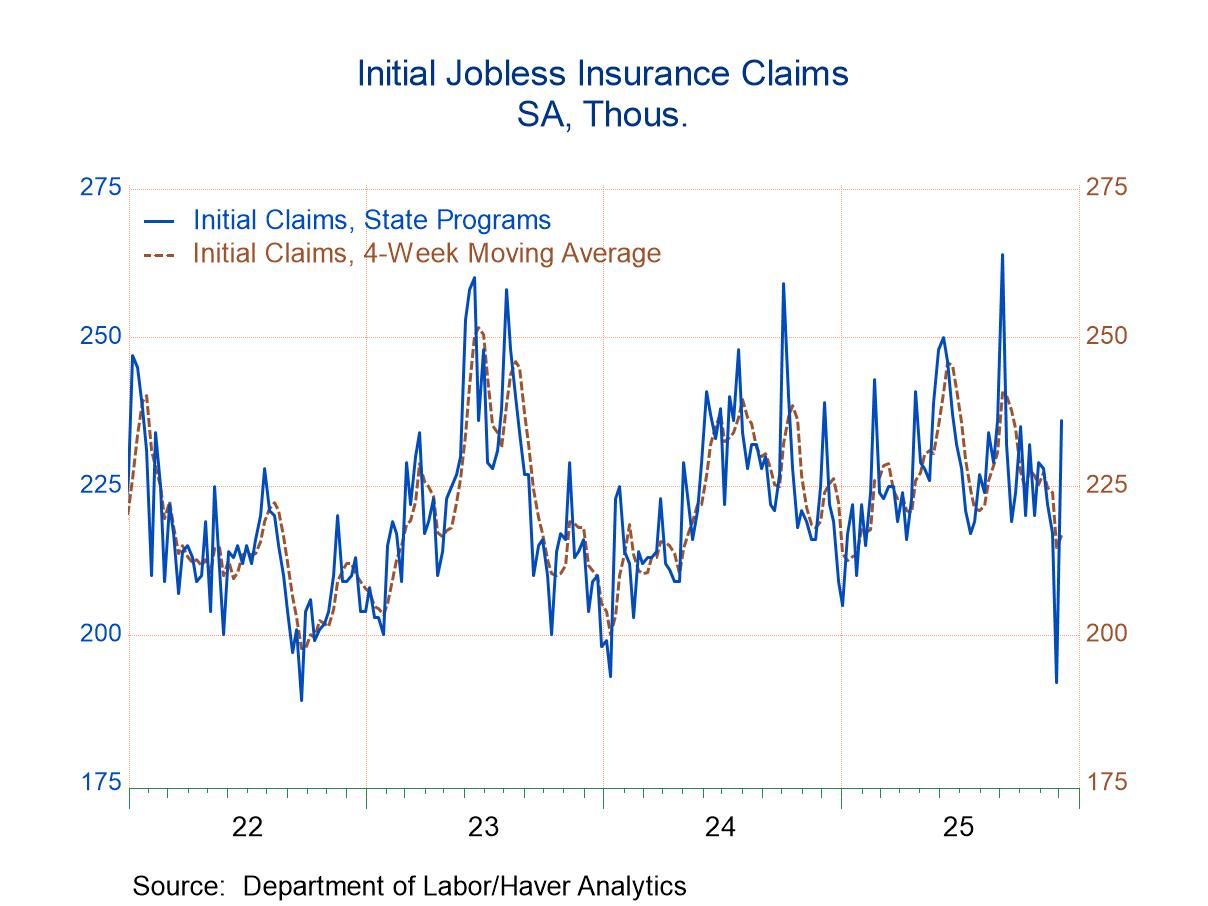U.K. Manufacturing: Output Trend Eases

U.K. manufacturing output rose by 0.4% month-to-month in May, reversing the output drop from April. Sequentially output is in a low-growth profile gain at a pace of 0.6% over six months and 12 months. The three-month growth rate registers a negative 4.2% at an annual rate. Quarter-to-date IP is falling at a 4.5% annual rate. Manufacturing output is still 4.2% below its level of January 2020, before COVID struck. That’s four years and output is still lower on balance.
April showers; still few May flowers Sectors show mixed results with consumer durables output lower in May, nondurable goods output higher month-to-month by 1.1%, intermediate goods output higher, and capital goods output lower. It’s a mixed bag in May.
Sequential Growth Rates Sequential growth rates from 12-months to 6-months to 3-months show consistent negative growth rates for consumer durables. They tend toward weaker results but do not progress steadily since there is less weakness over six months than over 12 months. Similarly, consumer nondurable goods output shows consistent growth and tends toward acceleration except for a weakening in growth over six months. Intermediate goods output runs a pattern like that for consumer durables, growth rates that are consistently negative and tending toward more weakness. Capital goods output growth is positive over 12 months and six months, but growth slows over six months and declines over three months, exhibiting clear sequential deterioration.
Key Industries Key industries are mixed as well. Sequentially only food, beverages & tobacco output grows over each horizon. Textile & leather output declines on each horizon. Textile & leather is sequentially deteriorating along with vehicles and essentially utilities where 12-month and 6-month output growth is at nearly the same pace before dropping over three months. Only mining and quarrying has output stronger over three months than over 12 months.

Summing up U.K. manufacturing continues to struggle without much in the way of good news in this report. The economy does not seem to have an industrial trend that is strong apart from food and drink. U.K. inflation has moved lower but core inflation has gotten stuck or slowed its drop or stopped falling altogether, and at a pace above what the BOE targets. The picture remains difficult with new leadership set to chart their course.
Robert Brusca
AuthorMore in Author Profile »Robert A. Brusca is Chief Economist of Fact and Opinion Economics, a consulting firm he founded in Manhattan. He has been an economist on Wall Street for over 25 years. He has visited central banking and large institutional clients in over 30 countries in his career as an economist. Mr. Brusca was a Divisional Research Chief at the Federal Reserve Bank of NY (Chief of the International Financial markets Division), a Fed Watcher at Irving Trust and Chief Economist at Nikko Securities International. He is widely quoted and appears in various media. Mr. Brusca holds an MA and Ph.D. in economics from Michigan State University and a BA in Economics from the University of Michigan. His research pursues his strong interests in non aligned policy economics as well as international economics. FAO Economics’ research targets investors to assist them in making better investment decisions in stocks, bonds and in a variety of international assets. The company does not manage money and has no conflicts in giving economic advice.





 Global
Global
